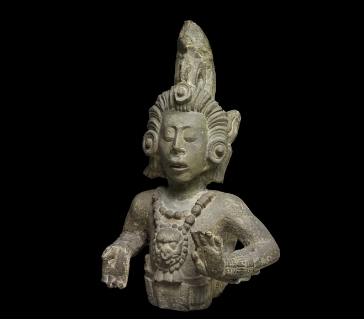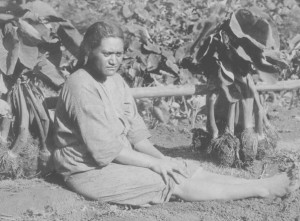Jeremy has just contacted me from London saying that today’s artifact on the BBC’s A History of the World in 100 Objects series is none other than a Mayan statue of (one of?) the maize god, Hun Hunahpu. ((We’ve blogged about the female version before, who is called Chicomecoatl.))
In Mayan mythology, the maize god was decapitated at harvest time but reborn again at the beginning of a new growing season.
You can read all about it, and listen to the programme, online. I’m sure this will not be the last agrobiodiversity-themed object to be featured on the programme.

